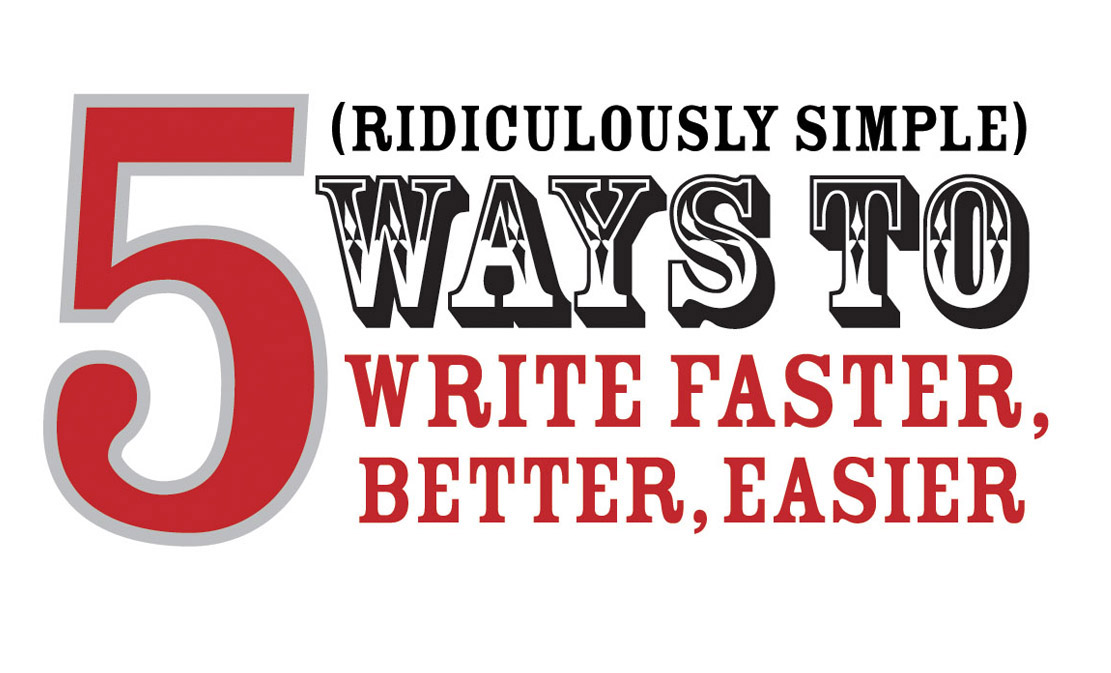Content Expert Interviews: A Time-Saving Writing System for Busy B2B Marketers (Part 4)
 Monday, March 3, 2014 at 08:33AM
Monday, March 3, 2014 at 08:33AM 
Welcome to the last article in this series on creating a writing and interviewing system for capturing content from subject matter experts.
For several years, studies have shown that lack of time is the biggest challenge B2B marketers face.
If that's true for you, it makes sense to start putting time on your side, right?
And that’s what'll happen when you have a dependable content writing/interviewing system at your fingertips.
In Part 1 of this series, you learned the importance of having an interviewing/writing system in place to capture content.
Part 2 taught you how to create a dependable interviewing/writing system.
You learned in Part 3 the two important steps to take to prepare for the content interview (including two checklists you can customize).
In this last article, you’ll learn a simple technique to direct the expert to answer your questions in a way that’s meaningful for your audience.
A common trap
 A lot of interviewers fall into the trap of not asking follow-up questions.
A lot of interviewers fall into the trap of not asking follow-up questions.
It’s totally understandable.
The typical reason for not following up is that the interviewer doesn’t want to “bother” the guest with additional questions, thinking it’s best to keep things moving along.
Another reason could be that the interviewer doesn’t want to appear less knowledgeable than their guest.
So, instead of drilling down and asking a few more questions to clarify an answer, the interviewer moves on to the next question.
I know it’s easier to keep moving along, but that’s not the best solution. There’s a better way to handle this situation (without feeling uncomfortable about it) and I’ll show you how.
But first . . .
Let’s see how NOT to follow up

Here’s a made-up example of an interviewer NOT following up on an unusable answer from the interviewee.
In this example, the interviewer doesn’t hear the opportunity to ask a follow-up question, but continued on to the next question on the list.
Interviewer: “So, what’s the best feature about this new software update?”
Guest: “Well, we updated our software to include seven more entry fields under the ‘Customer’ tab.”
Interviewer: “That sounds interesting. So what inspired the company to create this update?”
Uh-oh.
Do you see the missed opportunity here?
Seven new entry fields is a great feature—but what does it mean to the prospect or customer?
Nothing.
Here's how TO follow up
Interviewer: “So, what’s the best feature about this new software update?”
Guest: “Well, we updated our software to include seven more entry fields under the ‘Customer’ tab.”
Interviewer: “Hmm, so how does that help the customer?”
Guest: “Well, now they’ll be able to increase the amount of data in the customer knowledge base.”
Interviewer: “OK, that sounds interesting. So what does that mean? Can you give me a specific example or two of how this benefits the customer?”
Guest: “Sure. It definitely helps the customer, because sales teams will be able to sort and search customer feedback in a way they couldn’t before. So now they can respond to their customers 30 percent faster than they could with earlier versions of the software.”
Interviewer: “Is there any other way this feature helps the customer?”
Guest: “Sure. Once the sales team has made a presentation, they can update their experiences within the ‘Customer’ section. That means the team can refine the next step in the sales cycle and move the project forward with fewer delays.”
Interviewer: “How about one more benefit?”
Guest: “Sure. Third, . . .”
Ah, now we’re getting somewhere

We’re starting to capture benefit-driven, customer-focused answers.
Nice, right?
There are many interviewing tips and techniques to use but this is probably the most important one to keep in mind.
Summary
To get the best answers from your experts, it’s important to develop an interviewing and writing system.
When you develop a writing/interviewing system, you have a proven recipe to create interesting and relevant content for your audience. With a system at your fingertips, you'll:
- Save time—lots of it
- Beat writer’s block—forever
- Produce conversational—and professional-sounding—copy
For instance, this four-part series covered my content interviewing/writing system, which includes:
- Planning and developing an interviewing process to capture the right content for the final product
- Preparing yourself and your guest for the interview
- Directing the interview to create customer-friendly answers
Your system may be different or the same.
Either way, I hope I inspired you to create a system you can build and improve upon over time.
If you give it a go, you’ll have a system you can call your own.
And finally put time where it belongs.
On your side.
Enjoy your content interviewing journey!
Know someone who would like this article?
Feel free to share it with them.
_______________________________________________________________________________________
Written by ThomasCliffordB2BCopywriter Google+.
_______________________________________________________________________________________
Get your FREE 28-page e-book now
"Thomas Clifford has made something useful here. This report will give you some really catchy, useful ideas. It made me reconsider how I do what I do, so you might give it a look-see too!"
— Chris Brogan, President, Human Business Works
_______________________________________________________________________________________
When you register for future blog updates, you’ll receive a professionally produced, gorgeously designed 28-page e-book that will help you write faster, better and easier.
Here’s what you’ll discover:
- How to beat article chaos and stay organized (in just four steps)
- How to never run out of ideas—even when you’re up against the wall
- Why the “Whack-a-Mole Factor” prevents you from writing at your optimum speed
- The little known trick to writing faster that your teachers never told you about (but probably used themselves)
- How the 10-20-30 Principle can help even the busiest person find time to write
Just enter your email address in the field located at the top right of the page or click the button below.




Reader Comments